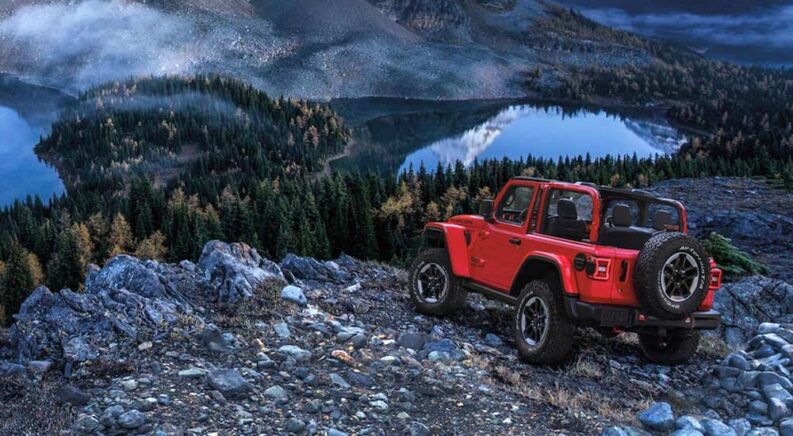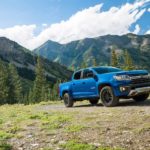You’re planning your next adventure on the trail, running through a mental checklist of everything you need to bring. Of course, there are the essentials, like extra fuel cans and recovery tools. There’s also camping gear like sleeping bags, food, and everything else you need to wrap up a long day on the trail around a campfire with friends. But what about your off-road rig itself? What does an SUV like the Wrangler need before it ventures off the pavement?
The Wrangler is a staple on trails across the country because it rolls off the factory floor ready to answer the call of the wild. However, veteran off-roaders know the importance of getting a Jeep alignment and completing their mechanical checklist before setting off for their next adventure. Here’s a closer look at why an alignment should be at the top of your pre-off-roading checklist and everything else you’ll want to consider before getting a little mud on the tires.
#1 – Check the Basics
Off-roading is one of the fastest-growing pastimes in the country as more people discover the beauty of life beyond the pavement. These adventures take you beyond the city limits and into the wild unknown, where you face challenging terrain adorned with every obstacle imaginable, from oversized boulders and downed trees to water crossings, sand, and mud. As you tackle this terrain, you rely on your Wrangler’s capability, communication with your spotter, and your own skills behind the wheel. If things go sideways, as they can easily do in the middle of the woods, it’s up to you and your fellow off-roaders to handle the situation.
Getting stuck in the mud is one thing, but overheating your engine because it’s low on oil is another story. One of the first things you can do to prepare your Wrangler for the trail is to conduct a pre-departure inspection. During this assessment, check all the fluid levels, from the oil and transmission fluid to the windshield wiper fluid. Do you see any visible leaks? Are the fluid levels optimal? Do any fluids need to be replaced?
As you check the basics, consider taking your Wrangler to your local service center for a multi-point inspection. This is ideal if you’re due for an oil change and tire rotation because the technicians will complete those services and conduct the assessment. Once the service is complete, ask for feedback on your tires and brakes, particularly any areas with uneven tread wear and the condition of the brake pads.
#2 – Consider an Alignment
Think about the wear and tear on your tires when you venture off the pavement. Tires are your Wrangler’s only point of contact with the ground, and off-roading pushes them to their limits. After all, you’re likely airing down your tires to improve traction and ensure they can traverse technical terrain. Even so, it’s impossible to ignore the necessity of an alignment before and after you venture off the pavement.
Alignments are typically recommended after any significant changes are made to the suspension, which is frequent in the off-roading realm where modifications to improve ground clearance, approach, breakover, and departure angles are critical. However, alignments are also recommended after a vehicle is involved in an accident or makes a substantial impact with a pothole or curb. Now, think about the extreme conditions that define the very essence of off-roading. Most trails offer plenty of challenges and obstacles, testing your rig’s agility as it ascends and descends steep grades and travels across boulders, through creeks, and around downed trees.
Before your next trip into the woods, consider scheduling an alignment to ensure your Jeep’s suspension is ready for the trail. The technicians will evaluate the camber, toe, and caster angles, which reveal how the suspension is positioned relative to the tires. Every automaker outlines the optimal angles, which tells the technicians how to adjust the suspension to enhance your Wrangler’s performance. Moreover, an alignment also promotes even tread wear, extending the life of your rugged (and expensive) off-road tires.
#3 – Inspect the Tires
As you prepare for your next adventure in the woods, assessing your tires is critical. Many off-roaders use their Wranglers to navigate their daily commutes and weekend adventures, meaning their tires see a lot of wear and tear. As a result, tire maintenance is critical for extending the life of your tires, whether you’re running BFGoodrich Mud-Terrains or the top-notch Nitto Trail Grapplers. But what does this maintenance involve?
First and foremost, every tire rotation should include the full-size spare. The spare on the Wrangler’s rear gate isn’t solely for looks and should be added into the typical rotation with every routine oil change. This ensures even tread wear across all five tires and eliminates any hitch in performance or handling when the unthinkable occurs and you’re changing a tire on the trail.
In addition to rotating your tires, inspecting their tread and condition before you venture off the pavement is essential. During these inspections, measure the tread using the penny test and look for uneven tread wear or signs of excessive wear. Are your tires in good enough condition to optimize traction and help you navigate technical terrain, or is it time to invest in a new set?
#4 – Check the Suspension
Off-roading pushes your Wrangler to its limits, testing its agility as it navigates extreme conditions. The suspension is integral to your Wrangler’s performance, heightening its responsiveness and adding to your comfort and control. Because of this, it’s essential to check the suspension and its components before you set off for your next adventure on the trail.
Assessing the suspension means checking the ball joints, tie rod ends, wheel bearings, and shocks. You can do this from the convenience of your garage, using a jack to raise the front end. Once in position, grab the tires and check for excess movement as you rock the tire in, out, and side to side. There shouldn’t be any free play in the tires. Likewise, there shouldn’t be any visible leaks or damage to the shocks, as this can dramatically impact your Wrangler’s handling and ability to absorb the bumps and impacts on more technical terrain.
#5 – Pack, Plan, and Communicate
Once you’ve assessed the mechanical and technical components of your Wrangler, it’s time to pack, plan, and communicate. Off-roaders typically travel in groups, with each rig carrying its own recovery equipment, extra fuel, and necessities. However, there’s more to planning a trip than picking a destination and calling it good. It’s critical to know the route you’re using and have several ways to view that route, like a GPS and physical map. It’s also good to share your plans and route with someone who isn’t going with you so they can send help if you don’t return on time.
Once you have the route planned, start packing the necessities. If you plan to spend the weekend in the woods, pack the necessary camping gear, which might include a hammock or tent, a sleeping bag, extra clothes, medication, toiletries, toilet paper, and trash bags to carry any waste out with you. Pack plenty of food and water, your phone charger, and handheld radios to communicate between vehicles if you don’t use a CB Radio.
After packing personal and communications gear, think about other necessities that will ensure a smooth trip. Of course, extra fuel and recovery gear is a given, but many veteran off-roaders also pack other tools, like jumper cables, a shovel, a small chainsaw, a spare tire, and a hi-lift jack. Also, consider how you plan to air down and air up your tires before and after you venture off the pavement. This may require packing a portable air compressor and ensuring you have all the tools necessary for it to work.
#6 – Don’t Forget the Small Stuff
Off-roaders love their gear, loading their rigs with the necessities and finding new ways to organize everything so it’s easily accessible. We often think of this gear as larger items, like extra fuel cans, shovels, and an air compressor. However, don’t forget the smaller equipment that can significantly impact your experience in the woods. These items include a basic tool kit that’s compatible with your vehicle and plenty of lights, from ensuring the lights on your Wrangler work to installing new batteries in your headlamp and flashlight. It’s also a great idea to add an emergency medical kit, which includes gauze, a tourniquet, medications, and other necessities to treat anything beyond a small cut or scrape.




